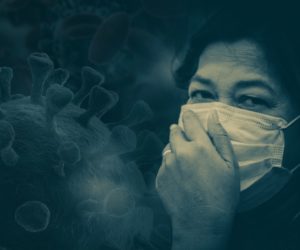by Okan Gurbuz
With the recent introduction of the Delta variant of the COVID-19 virus, opening the world back up to regular commerce and human interaction has once again become problematic. Although global vaccine distribution continues at a healthy pace, how quickly mask mandates are lifted and businesses are open continue to be regulated at the local level in the United States. This lack of a central controlling authority — and the reliable regulation of interactions such direction would facilitate — further complicate getting the COVID-19 pandemic under control.
In a blog published in December 2020, I talked about the first of a three-phase research project I and my team at the Center for International Intelligent Transportation (CIITR) conducted. We looked at understanding the relationship among transportation, socioeconomic factors, border crossing-specific parameters, and the rate at which COVID-19 spreads in shared border regions between the United States and Mexico. We found that regions hosting border crossings are more likely to have a higher rate of spread of infectious disease, including COVID-19. The challenge, then, is to minimize cross-border infection rates while maximizing mobility to encourage cross-border trade.
Better understanding this relationship holds significant implications for cross-border trade and tourism, both of which are primary contributors to the U.S. and Mexican economies. Although international travel may seem like it’s easy to control, everyday life in large population centers (for example, workers crossing the border to get to their jobs) make it increasingly difficult to contain. That makes understanding cross-border travel a key concern in predicting viral outbreaks in border communities.

Contact tracing is an approach to track down anyone that was in close contact with a person who has been diagnosed with the illness. It is considered one of the key practices to slow the spread for all infectious diseases.
We recently completed phase two of the project, which studied the impact of border restrictions on the spread of the virus and answer “what-if” questions from stakeholders regarding how to effectively implement contact tracing in border communities. First introduced during the SARS epidemic of 2004, contact tracing is a point-of-contact strategy used to find people who’ve been in contact with a person confirmed to have a given disease. By tracking and minimizing future exposures, the ultimate impact of a disease can be significantly reduced if not entirely stopped.
Traditionally, contact tracing requires a manual interview of infected individuals. Each interviewee may not recall everyone they’ve been in contact with and can’t identify people if they don’t know them personally. So, researchers have focused on emerging technology solutions (e.g., smartphone contact tracing applications) to automate the process. However, mass adoption of such apps remains limited due to privacy concerns.
As recent as July 21, 2021, the Biden administration extended non-essential travel restrictions for the U.S. northern and southern borders until Aug. 21. (These restrictions don’t apply to cross-border trade, U.S. citizen and lawful permanent resident travel, or people traveling for medical purposes.) As travel restrictions continue to lessen and the global economy continues to reawaken, the danger associated with new outbreaks (as we’ve seen with the Delta variant) grows.
My research team studied the effect of border-travel restrictions on cross-border mobility in the El Paso-Ciudad Juárez region. We found that improving the comprehensiveness of contact tracing efforts for the entire community while maintaining traditional tracing practices can reduce the number of cases (and, consequently, deaths) by up to 20 percent, while also allowing 50 percent higher border mobility (i.e., increased number of individuals physical crossing the border). However, enhancing contact tracing programs only for individuals who cross the border would not significantly reduce the spread of disease.
An effective contact tracing program tailored to the unique characteristics of the U.S.-Mexico border region will enable state and local enforcement agencies, national health regulatory agencies (like the Centers for Disease Control and Prevention), and the public better plan for and mitigate health impacts of such crises. The key (and the challenge) is implementing effective protocols without significantly reducing cross-border mobility or negatively impacting international trade. One potential avenue — the deployment and adoption of a worldwide mobile tracking application — would require extensive public outreach and binational coordination to be successful. That, in turn, would mean nations would have to agree on its implementation and the general public, regardless of country of origin, would have to embrace the technology.
Okan Gurbuz is an assistant research scientist in TTI’s El Paso Research and Implementation Office.

